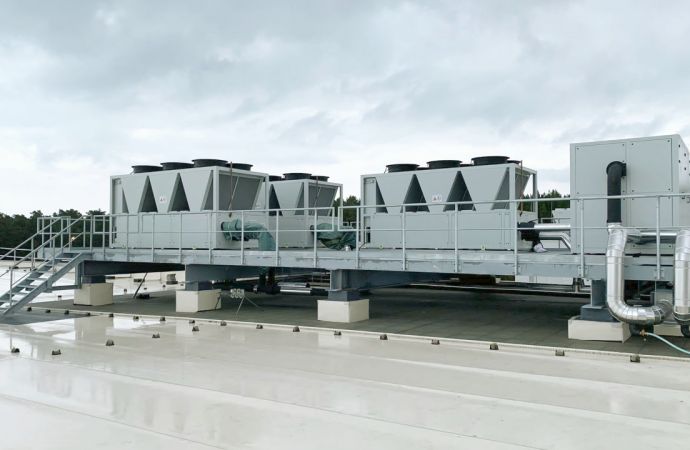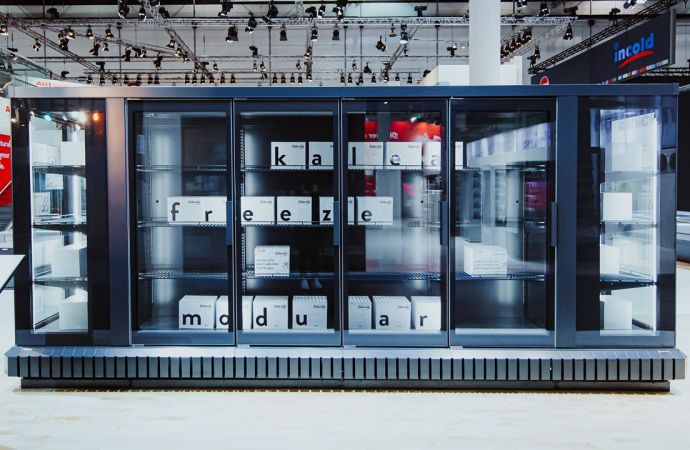From 210 to 460Gt of CO2e emissions can be avoided over the coming four decades with better efficiency and NatRefs.
_1618386319.jpg)
Italian component manufacturer Carel believes that better controls, by making HVAC&R equipment more efficient, will help the cooling industry play its part in tackling the climate crisis, and speed up the journey towards net-zero emissions.
That was the message from Miriam Solana, HVAC&R Technical Knowledge Specialist; Marco Fusca, Application Specialist for Retail Solutions; and Matteo Dal Corso, Applications Manager for Food Retail, at a webinar during the ATMO Virtual Trade Show 2021 for natural refrigerant technologies on March 30.
Solana detailed how 210 to 460Gt CO2e emissions can be avoided over the coming four decades if we carry out a transition to natural refrigerants and improve the energy efficiency of HVAC&R equipment. “We cannot achieve these goals by only looking at direct CO2 emissions, we also have to look at indirect emissions; that can be even more relevant,” Solana said.
Three-quarters of these potential savings would come from increased energy efficiency, and 15-77% of this can be found in supermarkets, she explained.
“The solution is natural refrigerants, combined with high efficiency technologies,” said Solana.
One of the ways to improve energy efficiency in supermarkets is to utilize continuous modulation in display cabinet equipment, explained Fusca. Continuous modulation creates running-cost savings, and also helps improve food quality by creating very stable temperature and humidity levels inside the cabinets, he said.
Carel is offering multiple solutions to help drive the transition towards more energy-efficient technology.
Plug-ins with R290 or CO2
Carel’s Heos is a product line for plug-in cabinets using propane (R290) or CO2 (R744), which can be delivered as a complete solution or as components. The full Heos package includes variable speed BLDC compressors, a DC speed driver, a stepper electronic expansion valve, temperature and pressure sensors, and the Heos controller and HMI.
The CO2 version of Heos is suitable for both subcritical and transcritical refrigeration. The R290 version is suitable for a range of capacities, from small applications like spot merchandisers to cold rooms with 10kW (2.84TR) medium-temperature capacity and more than 3kW (0.85TR) low-temperature capacity. The Heos range is ready for a 300g or 500g R290 charge limit, once the necessary legislation is in place around the world.
Carel is also offering the Heos one, which is a solution optimized for smaller plug-in applications. A few of the benefits of the Heos one solution are installation and maintenance cost savings and easy integration, according to Fusca. The savings are helped by the ability to deploy predictive maintenance.
CO2 condensing units and racks
Carel also offers controller solutions for centralized CO2 systems. Like the Heos solutions, these include continuous modulation for increased efficiency.
The Hecu was billed by Dal Corso as the “most efficient condensing unit solution,” featuring a DC inverter rotary compressor from Toshiba that allows for a very wide capacity modulation, big energy savings and easy installation. The Hecu can be connected to Carel’s supervisory system.
For larger capacity applications Carel offers the MultiDC, a fully modulating booster rack with an “extremely” wide modulation range from 5 to 100%, the widest in the market, according to Dal Corso. The units have a medium temperature capacity of up to 35kW (9.95TR) and 10kW (2.84TR) low-temperature capacity.
The MultiDC is “perfect” for retrofits to replace old HFC systems and can be installed in parallel to increase the capacity, Dal Corso said. Other benefits include very silent operation and compact design, making it suitable for urban installation.
Carel also offer modulating ejectors (EmJ) for CO2 racks, which can recover part of the expansion energy that is normally wasted, thus increasing the overall system cooling efficiency.
The effect of such an ejector increases with ambient temperature, Dal Corso explained, with experimental models showing that it can save 7.5% in energy consumption in Berlin, and up to 19.1% in a climate like Rio de Janeiro’s. The EmJ ejectors ranges from 20 (5.69TR) to 135kW (38.39TR) capacity.
We cannot achieve these goals by only looking at direct CO2 emissions, we also have to look at indirect emissions; that can be even more relevant,” - Miriam Solana, Carel
Related stories



